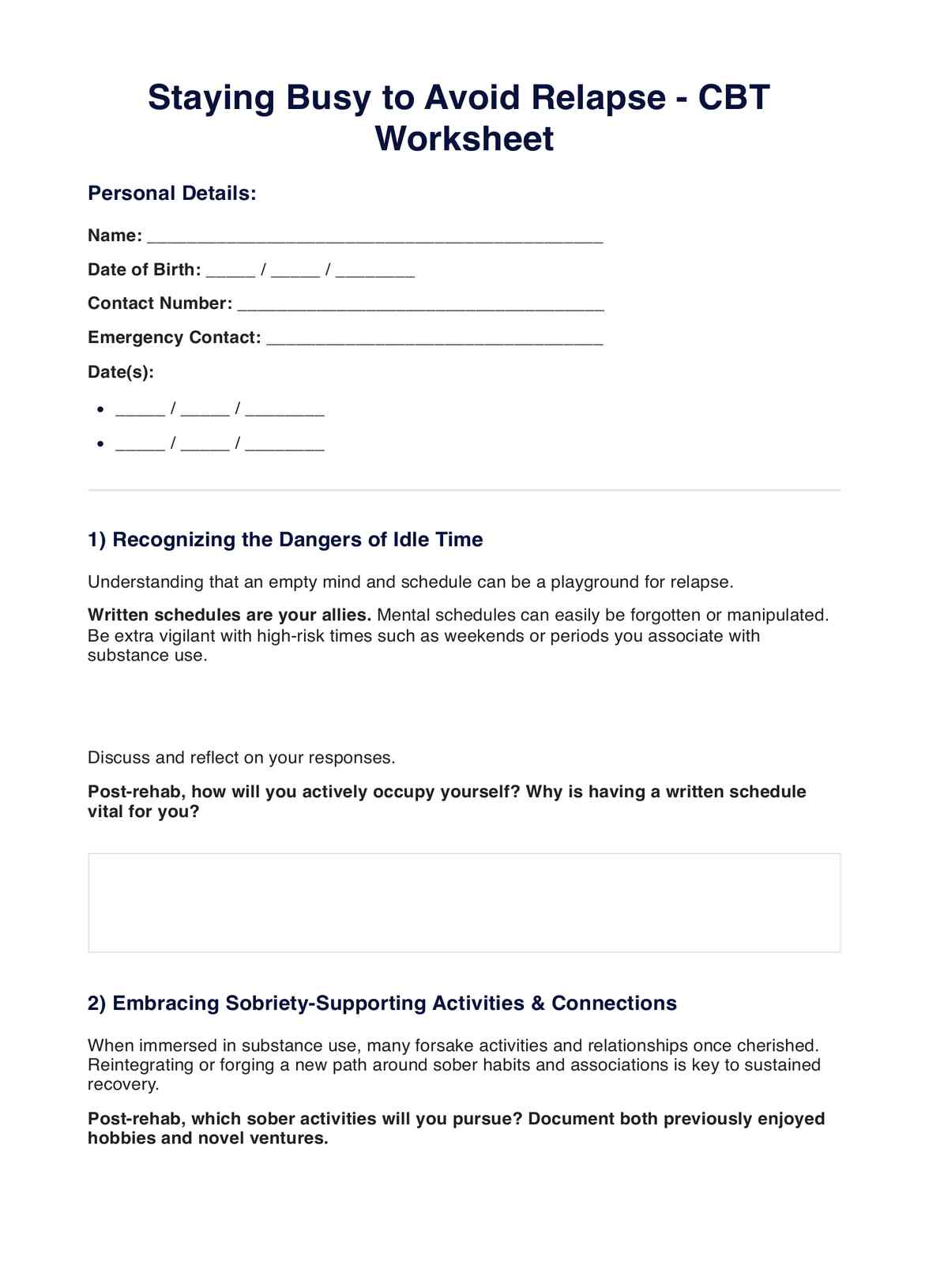The time varies depending on the individual, but generally, it can be completed in about 20-30 minutes.

Staying Busy to Avoid Relapse CBT Worksheet
Explore the Staying Busy to Avoid Relapse CBT Worksheet — an instrumental tool in your recovery journey, helping to identify triggers and prevent relapse.
Use Template
Staying Busy to Avoid Relapse CBT Worksheet Template
Commonly asked questions
It helps by identifying potential triggers for substance use and planning activities to distract from these triggers.
It is best used during the recovery phase of substance abuse treatment.
EHR and practice management software
Get started for free
*No credit card required
Free
$0/usd
Unlimited clients
Telehealth
1GB of storage
Client portal text
Automated billing and online payments











